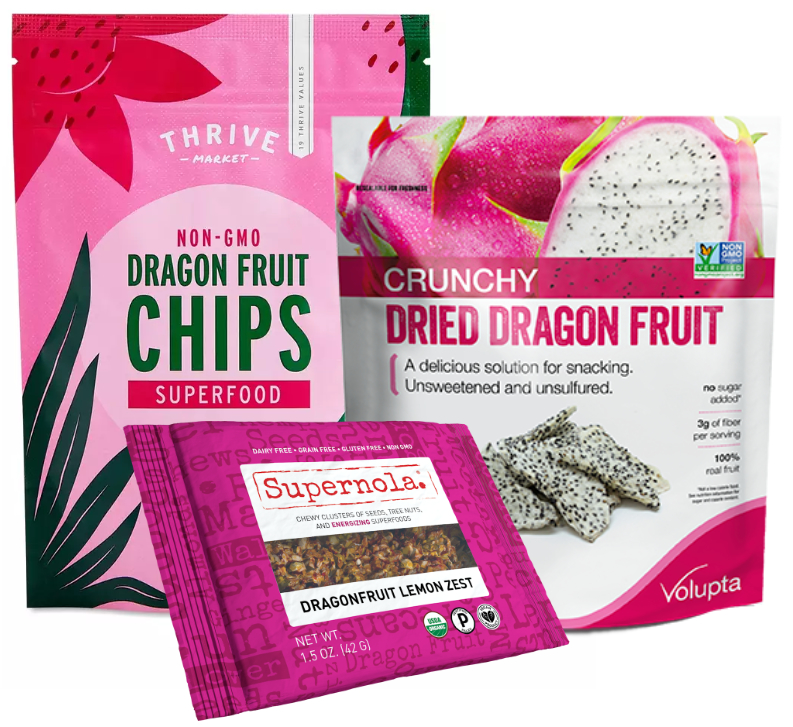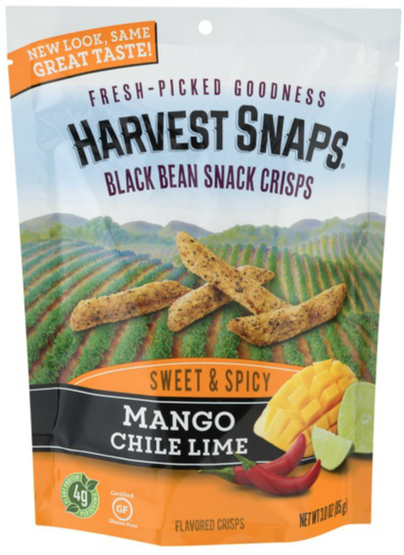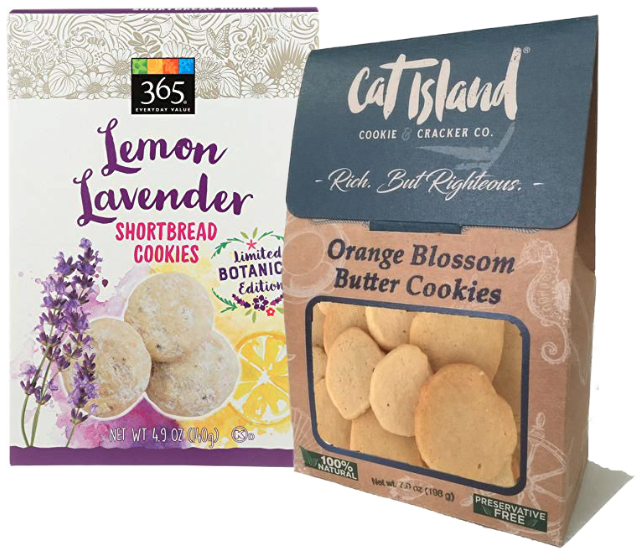CHICAGO — When it comes to snack flavors, consumers increasingly are interested in specifics. Not barbecue but Hawaiian barbecue. Not coffee but cold-brew coffee. Not berry but raspberry.
“Snacking is such a varied category in and of itself,” said Julie Laughter, market manager at Fona International, Geneva, Ill. “You go from meat snacks to granola bites to plant-based jerky to puffed chickpeas. Pretty much snacking has been defined as whatever you view as a snack. And the flavor trends that go with that are just as varied.”
Ms. Laughter discussed emerging flavor trends during a presentation at the Sweets & Snacks Expo, held May 21-23 in Chicago. Broadly speaking, tropical fruit, regional barbecue, botanical and fermented flavors are capturing consumer interest and Instagram feeds.
“Even the classics … aren’t just the classics anymore,” she said. “Because consumers instead of vanilla want Tahitian vanilla. And instead of chocolate, you’ll see Belgian chocolate, Dutch chocolate, hazelnut chocolate. Something a little different.”
Fruit flavors continue to reign across multiple snacking categories, and tropical varietals add a premium twist, Ms. Laughter said.
“What’s really cool about fruit is it’s almost like a never-ending funnel of innovation because there’s always a new fruit coming into the U.S. to try,” she said.
Yuzu, a Japanese citrus fruit, has seen significant growth on U.S. menus in the past year, she said.
“What was once exotic is now very much mainstream, and that time becoming exotic to mainstream is shortening,” she said. “It was only a few years ago that mango was pretty exotic, and now you can go through a drive-thru at McDonald’s and get a mango drink.”
 Prepare to see more dragon fruit popping up in snacks. Sweet, snappy and vibrantly pink, dragon fruit is roaring to life in beverages, including a seasonal offering at Starbucks.
Prepare to see more dragon fruit popping up in snacks. Sweet, snappy and vibrantly pink, dragon fruit is roaring to life in beverages, including a seasonal offering at Starbucks.
“Oftentimes with these emerging flavor profiles we see them start in the beverage aisle or juicing stores, and then they work their way over into other snacking categories,” Ms. Laughter said. “In 2018, 2.5 million lbs of fresh dragon fruit was sold in grocery stores, but they couldn’t even keep up with demand because over the last three years demand for dragon fruit has gone up 40%. That’s tremendous… That means more and more consumers get accustomed to that flavor profile.”
Raspberry is on the rise as a top flavor in sugar confections and sweet cookies, up 300% and 400%, respectively, in new product launches over the past two years in North America, Ms. Laughter said.
Featuring sweet, tart and slightly floral notes, raspberry is versatile and may add an “absolutely Instagrammable” pink hue to food and beverage products.
“Raspberry has been having a phenomenal run in snacking over the last couple of years,” she said. “Consumers rated raspberry as significantly more premium and indulgent when compared to all other berry flavors.
“If you’re crafting your innovation pipeline or maybe a line extension … or maybe you have a raspberry in your flavor portfolio, continue to do so. Maybe have one-off innovations. Raspberry is really killing it right now in snacking.”
Perennially popular citrus may be pumped up in product innovation through the addition of spices and herbs such as ginger, turmeric and basil, or with a touch of heat.
 “Spicy and hot snacking is where it’s at,” Ms. Laughter said. “There’s a 33% increase in hot and spicy flavors in U.S. snack product launches since 2016. Look to lime and mango and pineapple for top fruit pairings.
“Spicy and hot snacking is where it’s at,” Ms. Laughter said. “There’s a 33% increase in hot and spicy flavors in U.S. snack product launches since 2016. Look to lime and mango and pineapple for top fruit pairings.
“The top categories for spicy fruit combinations are sugar confections, salty snacks and meat snacks… Think about that next generation of innovation. Think about these new tropical fruits coming in or even these new citrus fruits like yuzu; those could one day replace the lime, mango and pineapple as your next phase of innovation. Also think of a new segment like plant-based jerky. We know this is performing well in meat snacks. Why not try it in plant-based jerky?”
In savory snacking, regional barbecue flavors are on fire, Ms. Laughter said, citing interest in Kansas City, Memphis, Texas and Hawaiian styles.
“What’s coming up next?” she said. “This is what’s trending in restaurants — Alabama white, a mayo-based barbecue, and Carolina sweet.”
International barbecue styles may inspire snack flavor innovation, she said, suggesting such examples as Mexican barbacoa, South African braai, New Zealand hangi and Filipino lechon.
“The point is, the innovation is nonstop with barbecue,” she said.
Top floral flavors in snacking include rose, hibiscus, violet, lavender and orange blossom; however, Ms. Laughter cautioned, this trend has yet to bloom among mainstream consumers.
“While it’s still in the emerging phase there are ways you can still innovate with it today,” she said. “If you’ve got consumers that are all in, fantastic. Go with it. But if you want to pace yourself here, here are some pro tips. To introduce floral flavors to consumers, think about pairing with familiar fruits. Notice with hibiscus, it’s often paired with orange, watermelon, berries and grapefruit.
 “Or add just a hint of it … just to introduce your consumer to that taste profile. Many U.S. consumers still need to get used to that floral/botanical flavor profile on their palate.”
“Or add just a hint of it … just to introduce your consumer to that taste profile. Many U.S. consumers still need to get used to that floral/botanical flavor profile on their palate.”
Fermented foods and flavors, including pickled fruits and vegetables, kombucha and Korean gochujang are catching on with consumers who associate such products with digestive health benefits.
“If you already have fermented snack products or are thinking about it, or have the flavor profiles that come with it, think about how empowering that is for your consumer to be able to have that as part of their health and wellness plan,” she said. “These fermented foods are hitting on obviously big trends ... health, global, sour and tart.”
Beverage-inspired flavors are spilling over into snacking categories, including sugar confections, frozen desserts, chocolate confections and snack bars, Ms. Laughter said. Top coffee flavors include espresso, mocha, macchiato and peppermint mocha, and top alcohol flavors are whiskey, bourbon, rum, mojito, piña colada and stout.
“Get specific,” she said. “When you think about coffee, think about Vietnamese, Turkish, cold-brew, americano. Tap into that local brewery or distillery or even coffeehouse and infuse that within your product.
“And think about expanding into new snacking segments. With meat snacks, what if you had an espresso rub?”




